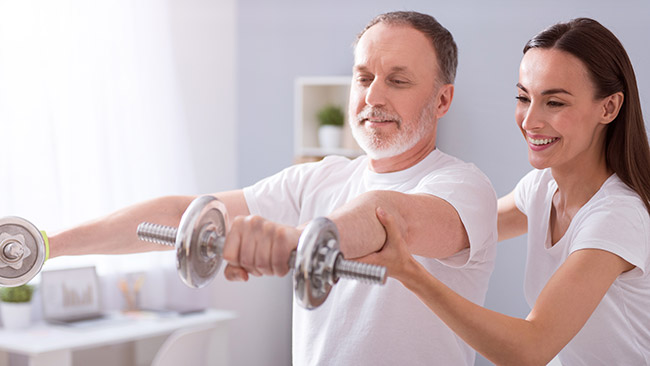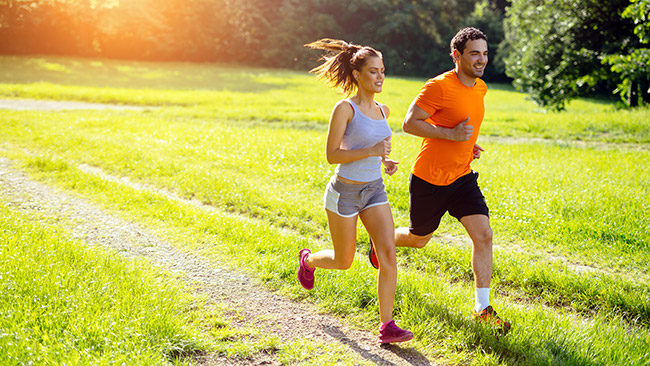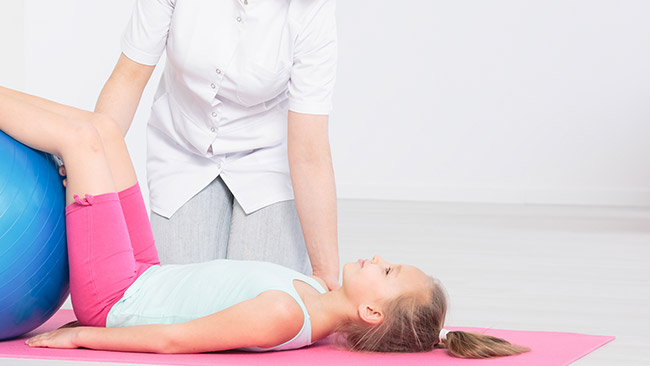OUR SERVICES

COMMON SHOULDER PROBLEMS
- Rotator cuff injuries
- Including small tears and impingement
- Frozen shoulder
- Dislocation/subluxation
- Bursitis
- Acromioclavicular (AC) joint injury
- Nerve impingement via the neck
- Muscle strains
- Rehabilitation following fracture, dislocation or post shoulder surgery
Shoulder problems are a common issue in the community at large. They are an important problem to overcome as they cause a great deal of impairment of function. These impairments can be basic things such as dressing, sleeping comfortably or reaching behind for the seatbelt. Or they can cause issues with work, playing sport and working in the garden.
We get shoulder issues for various reasons. They can involve the ageing process or involve a trauma such as a fall or collision in sport. Often they arise from postural issues and lack of strength/conditioning or have involvement from the neck.
Physiotherapy assessment of the shoulder involves observation of movement (or the lack of!), palpation of painful structures, noting shoulder posture, testing muscle power and looking for any neck involvement. Imaging such as ultrasound scan, X-ray or MRI can be necessary in adding to the clinical picture. If, after assessment, it is felt that you need to see a specialist then referral to an appropriate orthopaedic surgeon will be suggested.
COMMON NECK PROBLEMS
- Neck pain
- Difficulty turning the head due to pain/stiffness
- Neck muscle tightness
- Headaches
- Disc injuries
- Nerve pain with numbness or pins/needles radiating down the arm to the fingers
- Whiplash and motor vehicle accident injury
COMMON BACK PROBLEMS
- Low back pain
- Pain between the shoulder blades
- Stiffness in the back getting out of bed or standing up from a chair
- Back pain rolling in bed
- Morning stiffness
- Sciatica
- Buttock pain
- Scoliosis
Back and neck pain can often be the most debilitating of injuries. When an injury gives us pain with seemingly every movement we make, affecting our sleep and our ability to concentrate at work, let alone play sport or do whatever housework we choose, then certainly it is time to have the problem sorted out rather than ‘putting up with it’. Back and neck issues have a bad habit of becoming bigger, more complex problems the longer we leave them.
Most often there will be changes needing to be made to lifestyle and how one goes about doing things. Posturally, our seating and sleeping position may be an issue and need to be adjusted. Lifting and bending techniques may be poor and contribute to excess load being put on the spine. Fitness issues contribute to back problems whether it’s carrying a little too much weight or having poor core strength.
To sum up, back and neck problems require a holistic approach. On one hand, seeing a physiotherapist for hands on treatment will certainly improve spinal movement and decrease pain. But what do I need to do to help myself? Are there strengthening or stretching exercises that I need to do and what do I need to do to improve my posture? What is my lifting technique like or do I need to look at my sitting position at work?
TREATMENT TECHNIQUES
- Manipulation and manual mobilizing techniques
- Traction
- Massage techniques
- Taping
- Stretching exercises
- Core strengthening and postural strengthening exercises
- Electrotherapy
- Dry needling

COMMON KNEE PROBLEMS
- Ligament strains
- Meniscal injuries
- Tendon pain
- Kneecap pain
- Bursitis
- Arthritis
- Rehabilitation following arthroscope surgery, ligament repair/reconstruction, joint replacement
Knee injuries are a large component of what physiotherapists treat. Whether it be the sporting knee or the knee troubled by simple everyday squatting or using stairs a physiotherapist should be able to help.
When we assess your knee problem, we look at clinical tests involving – ligament and meniscus tests, presence of swelling, muscle weakness, palpation of areas of pain, joint posture including foot/ankle posture and range of joint movement. If further investigation is required, such as X-ray or MRI, then this will be organised. If the injury is out of our scope and may require surgical intervention, then referral to an appropriate orthopaedic surgeon would be arranged.
ANKLE AND FOOT INJURIES
- Ligament strains
- Ongoing instability and ‘rolling’ of the ankle
- Plantar fasciitis
- Achilles problems
- Heel spurs
- Rehabilitation following fracture or surgery
Ankle and feet problems generally impact mainly on our gait and stance. As we spend such long periods of the day either standing or walking somewhere, issues with our ankles and feet can have a large effect on our everyday comfort and ability to function.

SPORTING INJURIES
- Muscle strains and tears – Most commonly: hamstrings, calf, groin and quadriceps
- Knee and ankle ligament strains
- Shoulder injuries – Most commonly rotator cuff injuries, rehabilitation following dislocation/ subluxation and acromioclavicular joint strains
- Elbow injuries – Most commonly Tennis and Golfer’s elbow
- Shin Splints
- Tendon pain, tendonitis and tendinopathy – Most commonly Achilles tendon and patellar tendon
- Foot injuries – Most commonly plantar fasciitis and ligament strains
- Knee cap (patellar issues)
Sporting injuries encompass a wide variety of causes and injury. From the traumatic cause – the rolling of an ankle, twisting of a knee, falling awkwardly during a tackle – to the sudden overload resulting in a muscle tear or tendon strain, or a biomechanical issue resulting in repetition overload in a joint, tendon or ligament.
The goal of all sports people is getting over the injury, returning to training/sport and to find out what needs to be done (if possible) to prevent this happening again.
REHABILITATION FOLLOWING SURGERY
Rehabilitation following surgery involves regaining range of movement, decreasing pain and swelling, graduated strengthening exercise programs (specific to the anatomy that has been repaired in surgery), resolution of normal gait patterns and achieving good joint proprioception (balance).
Your surgeon will have his own protocols in regards to how quickly he will want your rehabilitation to progress. Once good movement has been achieved, good strength and function has returned and adequate healing time has taken place, then return to more normal levels of activity will be supervised and encouraged. Ultimately your surgeon will dictate how quickly he would like you to return to normal activity dependent on the type of injury, the degree of underlying damage involved and the type of surgery that has been performed.
